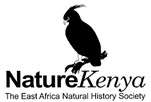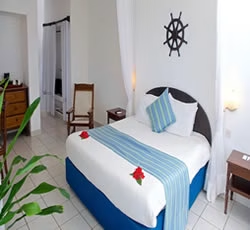Masai Mara Conservancies - Size, Location & Acreage
The Masai Mara region is renowned for its rich biodiversity and stunning landscapes. It consists of several wildlife conservancies that work in conjunction with the Masai Mara National Reserve to support conservation efforts and promote sustainable tourism. Below is detailed information about the Masai Mara Wildlife Conservancies:
Overview of Masai Mara Wildlife Conservancies
- Purpose:
- To protect wildlife and their habitats.
- To enhance the livelihoods of local communities through sustainable tourism.
- To manage human-wildlife conflicts.
Major Conservancies in the Masai Mara
Source - Masai Mara Wildlife Conservancies Association
28,487 + (Ha)
Mara North Conservancy
Mara North Conservancy is a beautiful private wilderness area of more than 29,170 Ha (~72,080 acres). It is a vital part of the Masai Mara ecosystem as it forms the north-western zone, bordering the Masai Mara National Reserve in the south of Kenya. MNC is a not-for-profit entity established in January 2009, The conservancy is a partnership between 12 Tourism Partner members (10 permanent camps & 2 riding outfits) & 783 Maasai Landowners. The aim is to create a best-practice, world-class conservancy with long-term commitments to the environment, wildlife, and local communities
Where to Stay in Mara North Conservancy
 |
|  |
Alex Walker Mara Serian CampPerfect for families, young & old. Serian, “The Original” showcases Mara’s magic all year round. | Elewana Elephant Pepper CampPerfect for families, very child friendly, kids buffet, stunning location, off-beat, outstanding cuisine. | Karen Blixen Mara CampFamily tents, junior ranger program, stunning location overlooking Mara River, excellent cuisine. |
25,900+ (Ha)
Pardamat Conservation Area
The Pardamat Conservation Area is premised on a mixed conservation model to ensure the survival of the greater Masai Mara ecosystem and the generation of economic benefits for local communities. Through this model, the Pardamat community’s 850 landowners have legally registered their 26,000 hectares of land as a wildlife conservation area.
The Pardamat area is important to the well-being of the greater Mara ecosystem. It is adjacent to Naboisho, Olkinyei, Lemek, and Mara North conservancies and serves as a migration route from the Loita plains that connects the four established conservancies to the Mara Triangle and then to the Masai Mara National Reserve. Additionally, its hilly and forested terrain is cherished by elephants for browsing as well as open spaces, against rising threats, like unplanned development and settlements as well as fencing.
23,000+ (Ha)
Oloisukut Conservancy
Oloisukut Conservancy is a haven gracefully situated along the Siria Escarpment in the northern expanses of the Mara. Unfolding across 23,000 acres, with 16,000 acres securely leased for 25 years, this conservation masterpiece is a collaborative endeavor uniting 59 devoted landowners and a thriving community of 109 members.
Our commitment to conservation is amplified through strategic partnerships with esteemed organizations like WWF, MMWCA, and the Base Camp Foundation. Teaming up with tourist partners Mara Nyota and House in the Wild, we prioritize sustainable growth, cultivating a seamless coexistence with the natural tapestry that surrounds us.
The conservancy boasts a diverse landscape—graceful grasslands, lush forests, meandering riverine forests, and expansive open and closed bush lands. This harmonious mosaic of ecosystems provides a dynamic sanctuary for a rich array of flora and fauna.
Oloisukut offers a captivating wildlife experience, home to an impressive population of Maasai Giraffes that distinguishes Oloisukut as a standout destination within the Mara. Additionally, serving a pivotal role as an Elephant Corridor linking Mara North, the greater Mara and Mara Triangle to the Nyakweri Forest, our conservation efforts play a crucial role in preserving vital wildlife migration routes.
Oloisukut takes pride in safeguarding rare and exquisite wildlife and bird species among them, the Mountain Reedbuck, Giant Forest Hogs, and two Pangolin species—the majestic Giant Pangolin and the elusive Temminck’s Pangolin. Our steadfast commitment to preserving these unique creatures underscores our dedication to biodiversity and ecological harmony.
Embark on a journey of discovery at Oloisukut Conservancy—a seamless fusion of nature, community, and sustainable stewardship. Witness the wonders of conservation in action with us.
22,500 + (Ha)
Mara Naboisho Conservancy
Mara Naboisho Conservancy is more than 52,000 acres made up of land contributions from 636 landowners. Located adjacent to the Masai Mara National Reserve, Naboisho is home to the big cats – in impressive numbers – and herds of elephants, giraffe, and wildebeest. Mara Naboisho is one of the best places in the world for lion spotting. Currently, about 100 lions are concentracted over this conservancy. One great reason to visit Mara Naboisho and stay in one of the chic tented camps.
Rare species such as Aardvark, Caracal, Serval cat, Aardwolf, and Ratel are occasionally found. Naboisho is a bird watcher’s paradise with several bird species rarely seen elsewhere in the Mara such as White-Headed Buffalo-Weavers, Northern White-Crowned Shrike, Pigmy Falcon, Von Der Deckens Hornbills, and Bush Pipits. The conservancy strictly monitors the number of tourists who enter the area, reducing the number of vehicles and the human impact on the environment and wildlife.
15,200+ (Ha)
Olare Motorogi Conservancy
Olare Motorogi Conservancy (a combination of Olare Orok and Motorogi conservancies) covers an approximate area of 33, 386 acres and is a strategic buffer zone for the Masai Mara National Reserve and key wildlife migration corridors. Built upon a partnership with 288 landowners, Olare Motorogi management has worked with the local people who agreed to move their homes and only allow carefully managed cattle grazing, leaving the wildlife completely unimpeded.
The Conservancy offers pleasant and exclusive tours in a pristine environment, with a rich and diverse wildlife population of both predators and herbivores, including Mara’s famous big cats and many elephants. Rhinos and wild dogs have also been sighted, and it is becoming a very viable habitat for these two highly endangered species, given the right sort of protection through sensitive tourism development.
11,000+ (Ha)
Mara Siana Conservancy
The Siana Conservancy was originally established in 2004. After several attempts, the present MSC is the result of a close partnership between Entumoto Safari Camp, Spirit of Masai Mara, and 1450 local landowner families. Thanks to donations from WWF UK/Germany/Kenya, another 812 landowners recently joined and put their land into the Conservancy. This brought an additional 11,000 Ha for wildlife and nature, also for the benefit to the local community. We pay yearly leases to over 2000 Maasai landowner families, we employ 50 local rangers and we support schools, clinics and pay bursaries to many school-children. We also have a fund for human-wildlife conflicts. MSC is a not-for-profit organization
9,308+ (Ha)
Mara Ripoi Conservancy
Mara Ripoi Conservancy covers 24,500 acres and is a partnership between 2,200 landowners and 2 tourism camps.
7,544+ (Ha)
Ol Kinyei Conservancy
Ol Kinyei Conservancy was established in 2005 and lies between the Masai Mara National Reserve and the Loita migratory plains in the wildlife dispersal zone in the greater Mara Ecosystem. This migratory route is where, historically, the wildebeest passed through to the northern part to breed.
It was the first conservancy to be established after the Olchoro Oiroua Wildlife Trust. The Conservancy was established based on three concepts, whose pillars are to support conservation, enhance community benefits, and increase the clients’ experience.
Ol Kinyei is a pioneering and award-winning conservancy in the Mara ecosystem, having been green-listed by IUCN for 2018–2023. It covers an area of 18,641 acres. The conservancy is a partnership between 177 local private landowners and GameWatchers Safaris/Porini Safari Camps. Since the formation of the conservancy, many indigenous species have returned to the land.
The Conservancy is now home to a wide variety of wildlife, including the resident pride of lions, leopards, and numerous other animals, as well as over 300 species of birds. It comprises open savannah, plains, riverine forest, streams and rivers, rolling hills, and spectacular views across the Mara.
7,021 + (Ha)
Mara Lemek Conservancy
Lemek Conservancy was initially part of the Koiyaki Lemek Community Wildlife Trust established on September 15th, 1995. Later, Lemek members felt the need to break away from the Trust and formed Lemek Conservancy, registering it in 2009.
Covering 17,350 acres with 350 landowners, Lemek Conservancy is one of the high wildlife density areas with Great Plains offering pleasant scenery and the best wildlife viewing areas of the Masai Mara ecosystem. It is home to big cats namely Lions, Leopards, and Cheetahs, and occasionally large herds of Elephants can be spotted. Others include Hippo, Warthog, Buffalo, several species of Antelope, and numerous bird species. The Conservancy comprises open savannah and a tree-lined section of the Mara River with high concentrations of plains game and the wildlife numbers are particularly intensified during the annual wildebeest migration.
6,472+ (Ha)
Ol Choro Oirouwa Conservancy
Ol Choro Oirouwa Conservancy is among the first conservancies established in East Africa as a Wildlife Trust in 1991. In 1992, the late Willy Roberts advised Maasai elders that white rhinos could flourish in Ol Choro’s habitat: Hence, they borrowed two rhinos from Solio ranch. In 1993, there were 10 southern white rhinoceros in Ol Choro which were translocated from Kwa Zulu Natal, South Africa, and the borrowed ones were retranslocated back to Solio ranch. Being a model conservancy, today, Ol Choro is the only conservancy in Mara protecting two southern white rhinos under the surveillance of rangers and Kenya Wildlife Service officers.
6,070 + (Ha)
Maasai Moran Conservancy
The Maasai Moran Conservancy (MMC) currently has a committee led by a Chairman, Secretary, and Treasurer who are also co-signatories to the MMC bank account. It is also currently manned by 20 rangers shared with the Nyekweri Kimintet and Nyekweri Oloirien Trusts respectively.
It currently comprises 250 landowners with 15,000 acres of land. It also currently has five eco-tourism bandas suitable to accommodate guests. We support Women’s enterprises in beadwork and beekeeping and improve livestock production by improving breeds.
Giraffe research and monitoring is ongoing at the OGR to better understand habitat use by giraffes, especially by mother-infant groups, which is so important for sustaining and recovering this endangered species. Comparisons of various vegetation types frequented by giraffes are being made throughout the year. Maasai teams monitor giraffe movements on local conservancies and patterns of entering and leaving the Mara Triangle.
Unique Features in the Conservancy
- It has good connectivity and links to other conservation areas, including Masai Mara National Reserve/Mara Triangle, Nyekweri Kimintet Trust, Nyekweri Oloirien, and Oloisukut Conservancy.
- It has diverse rangelands that support livestock, people, and wildlife.
- It includes the Siria escarpment, which provides good viewing points to the Masai Mara Game Reserve and conservation areas in the Rift Valley.
- It has unique forest islands with different plant species native to the Siria Plateau. Many bird species are endemic to the area, along with the rich bird biodiversity, and many endangered and declining mammals, such as the giant ground pangolin, Maasai giraffe, African elephant, and Oribi, depend on the area.
- It provides a critical habitat for endangered Maasai giraffe as there is an abundance of short acacia & other giraffe food plants used by newborns,likewise Lions densities are lower on the Siria plateau than in the Rift Valley reserves due to presence of Maasai homes.
4,856 + (Ha)
Nashulai Maasai Conservancy
Nashulai Maasai Conservancy was established in 2016, It covers 10,000 acres and has 195 landowners. We have one tourism partner, Oldarpoi Mara Camp. Nashulai is a Maasai-founded, directed, and run conservancy protecting a critical migratory corridor and wild elephant nursery.
Nashulai means peaceful coexistence of wildlife, people, and livestock. We conserve wildlife, preserve culture, and reverse poverty. Our model is community-based conservation, that combines wildlife conservation, sustainable tourism, and community development, where local communities are directly involved in wildlife and habitat protection. The goal is to conserve the environment and wildlife while improving the livelihoods of the indigenous Maasai people.
Nashulai borders the Masai Mara game reserve in the west and acts as a migratory route of wildlife to other conservation areas. There is a large number of giraffes and a resident pride of lion that lives in our core area and several species of birds.
3,642+ (Ha)
Mbokishi Mara Conservation Area
Mbokishi Mara Conservation Area lies in North East of the Northern Mara Conservancies, adjacent to Enonkishu Conservancy. It was established in September 2021 and comprised of 600 families who have been supportive of the conservancy system since the inception of the conservancy models. Its location provides vast potential for increasing the acreage of wildlife habitat by nearly 10,000. Mbokishi houses five different communities that have committed their land to the conservation of wildlife species. The habitat includes forested hillsides which provide valuable habitat to young elephants and numerous threatened raptor species. Although the charismatic predators often make their presence known through conflict incidents with livestock, Mbokishi began implementing mitigation strategies to enhance the coexistence and teach the story of how wildlife conservation can benefit sustainable human development as well as additional improvement to livelihoods as the quality of livestock improves.
3,259+ (Ha)
Mount Suswa Conservancy
Mount Suswa Conservancy was started in 2008 as Mount Suswa Conservation Trust. Suswa Conservancy is a trans county and covers both Narok in the south west and Kajiado to in eastern sides The board of trustees was derived from the eight cluster villages from within and outside the slopes of the mountain. The scenic caldera of the mountain and mout Suswa lava tube caves act as tourists attraction features in Suswa. There is also several wildlife in the area.
3,108+ (Ha)
Olderkesi Conservancy
Olderkesi Conservancy is adjacent to the southeast corner of the Masai Mara National Reserve, just north of Tanzania’s Serengeti National Park. The conservancy is managed by two trusts: Cottar’s Wildlife Conservancy Trust (CWCT) and Olderkesi Wildlife Community Trust (OCWCT). These two groups have worked closely together over the past 20 years to create a vital, truly sustainable conservancy management plan. Olderkesi Conservancy is owned by the Maasai, who are the OWCT, but it is rented by Cottar’s Wildlife Conservancy Trust
2,600+ (Ha)
Isaaten Conservancy
Isaaten conservancy sitting on 2,600 hectares of protected land is located in the eastern part of Masai Mara. The conservancy comprises of 318 land owners that have come together to lease their land for conservation. Isaaten conservancy offers a heaven for Browsers, Elephants, Lions and even Cheetahs. With it’s rich vegetation and beautiful landscape, Isaaten stands out to be among the most important wildlife corridor in the Eastern Mara conservancies.
2,255 + (Ha)
Orpua Conservancy
Orpua Conservancy: Located along the Greater Sand River corridor (GSRC), an integral ecological connection of Masai Mara National Reserve (MMNR) to the Loita Naimina Enkiyio Forest. In 2021 the local community of Naikarra came together to pull their land parcels to establish an initial conservancy core area of 12,500 acres owned by 625 landowners, effectively creating a second conservancy within the GSRC after Olderkesi conservancy to secure the entire corridor, protect their culture and wildlife and enable compatible land uses.
2,134 + (Ha)
Nyekweri Oloirien Conservancy
Nyekweri Oloirien Conservancy Trust was established in the year 2020 and registered in 2022 as a Trust, with 10 trustees: 3 women and 7 men.
Located in the western part of Mara Triangle and Mara Conservancy and at the side of Nyekweri Forest.
Nyekweri Oloirien Conservancy Trust is unique because of various species of birds and wild animals that you can’t find in the other areas like for example the Giant pangolin (group pangolin), which you can only find at Nyekweri in the whole region.
2,020+ (Ha)
The Olerai Conservancy
The Olerai Conservancy – protecting land for wildlife and people With around 70% of wildlife in Africa living outside protected areas such as National Parks, the proactive formation of community conservancies continues to grow in importance as a way of giving wildlife more space to prosper. In 2017, 23 landowners from the Ndoinyo community on the border of the Massai Mara agreed to lease their parcels of land to form the 2,020 Ha Olerai Conservancy. Olerai is a Maasai name for the Yellow barked acacia Acacia xanthophloea which is a characteristic vegetation among the diverse indigenous trees and shrubs that are currently protected in the area. Additionally, the conservancy harbors horses for horse riding safaris.
1,624+ (Ha)
Enonkishu Conservancy
Enonkishu is situated on the northernmost point of the Greater Mara Ecosystem covering an area of 5,928 acres, two tourism partners, and 42 landowners. The main focus of the conservancy is livestock improvement through innovative cattle management programs, running alongside novel tourism projects. Indeed, the name Enonkishu – Maa for healthy cattle – was chosen by community elders as the description of the ideal livestock herd.
The habitat comprises wooded acacia savannah with open plains on flat plateaus, riverine acacia forest, and rocky, undulating hills which provide a varied habitat for browsing and grazing ungulates, as well as hideout thickets for the predators. The Mara River runs alongside the conservancy.
There is a large number of giraffes and resident buffalos that live close to the Olerai boundary along the Mara River. Elephants frequent the conservancy and there is a pride of lion that is based on the edge of Enonkishu and Ol Choro Oiroua. There are many hippos and crocodiles in the section of river that borders the conservancy and the riverine forests provide an area popular with leopards. Rare species such as Aardvark, Caracal, serval cat, and Aardwolf are occasionally found. Colobus monkeys have been spotted in the valleys on the Kileleoni Hill and there have also been sightings of wild dogs in the conservancy.
1,121+ (Ha)
Nyekweri Kimintet Conservancy
Nyekweri Kimintet Community Forest Conservation Trust was formed in 2004 and registered as a Community-Based Organization (CBO) by the Current chairman Mr.Peter Tompoy and later became registered as a trust in June 2021 and a company limited registered in March 2022. It currently comprises 18 Staffs supported by different organizations such as World Wide Fund for Nature (WWF), Masai Mara Wildlife Conservancies Association (MMWCA), Indigenous Information Network (IIN) & Africa Foundation (AF). It is a mixed-model Conservancy where Wildlife coexists with People & Livestock. The Conservancy boasts of the rich Maasai rich Cultural traditions, Scenic Siria Plateau and currently discovered as a suitable habitat for the Giant Ground Pangolin only in Kenya.
866+ (Ha)
Enarau Conservancy
Enarau Conservancy was formed in 2022 The Enarau Conservation Area was established in the Masai Mara, Kenya to expand wildlife conservation areas, restore degraded farmland, and protect existing vegetation and critically threatened habitats. When managed appropriately, the conservation area has the potential to attract more wildlife and promote natural plant regeneration. The latest addition to Northern Mara Conservancies which includes Lemek, Ol Chorro, and Enonkishu; Covers 866 hectares (2140 acres); Contiguous to newly formed Mbokishi Conservancy; Further expansions of the conservancy are possible; Site for CERK (Center for Ecosystem Restoration-Kenya); A wildlife corridor to Mbokishi will be built connecting Enarau to the Masai Mara, adding another 1,000 acres to the conservation, bringing the total to 3,140 acres. This includes a 336-acre plot of leased farmland that had been exclusively used for intensive agriculture for more than two decades.
Key Features of the Conservancies
- Biodiversity:
- Home to a wide variety of wildlife, including the Big Five (lion, leopard, elephant, buffalo, and rhinoceros), as well as numerous species of birds, herbivores, and predators.
- Community Involvement:
- Many conservancies are managed in partnership with local Maasai communities, ensuring that they benefit from tourism revenues and play an active role in conservation efforts.
- Sustainable Tourism:
- The conservancies promote eco-friendly practices, limiting the number of visitors to reduce environmental impact and enhance wildlife viewing experiences.
- Conservation Initiatives:
- Each conservancy implements various conservation programs, including anti-poaching efforts, habitat restoration, and wildlife monitoring.
Importance of Wildlife Conservancies
- Conservation:
- Help preserve ecosystems and protect endangered species.
- Economic Benefits:
- Generate income for local communities through tourism, creating jobs and supporting local businesses.
- Cultural Preservation:
- Support the Maasai culture and traditions by involving local communities in tourism activities.
Conclusion
The Masai Mara Wildlife Conservancies play a crucial role in the conservation of wildlife and habitats while contributing to the economic and social well-being of the local communities. They offer visitors a unique, sustainable and responsible way to experience the incredible wildlife-rich and natural beauty of the region.








